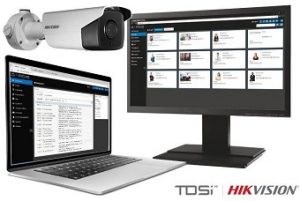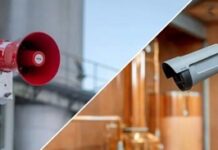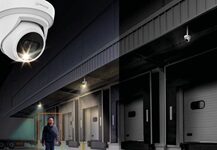
Integrated security manufacturer, TDSi has announced that its powerful GARDiS access management software now supports full integration with Hikvision’s face recognition terminals and ANPR cameras. Providing options for Wiegand and Clock & Data protocol inputs, TDSi’s GARDiS software delivers quick and simple, but powerful integration with Hikvision’s face recognition terminal, and the wider security network.
This includes integration with ASSA ABLOY Aperio and SimonsVoss SmartIntego wireless locks, along with a wide choice of intruder alarms and CCTV systems. GARDiS includes Lift Control, Area Occupancy, and ANPR, which are all designed to assist with not only security, but also ongoing safeguarding of health requirements.
Integration with Hikvision’s face recognition terminals adds considerable functionality to any security network, with features including:
• Temperature measuring range – 30 °C to 45 °C (86 °F to 113 °F), with an accuracy of 0.1 ° C, deviation of ± 0.5 °C
• Facemask wearing alert
• Multiple authentication modes (card and temperature, face and temperature, card and face and temperature,)
• Triggered voice prompt, when detecting abnormal temperature
• Configurable door status (open/close), when detecting abnormal temperature
• 6000 face capacity, 6000 card capacity and 100,000 event capacity
• Six attendance statuses – Check-in, check out, break-in, break out, overtime in and overtime out
• Watchdog design and tamper function
John Davies adds, “The last 18 months has demonstrated the need for security and safety systems that can be rapidly deployed and installed, with the flexibility to evolve and grow to meet future user requirements.” He concludes, “Be it individual end-user projects or the delivery of rapidly expanding Security-as-a-Service (SaaS) solutions, the GARDiS integration with Hikvision’s systems is a perfect example of the potential for modern systems to work closely together and deliver potentially life-saving benefits.”












